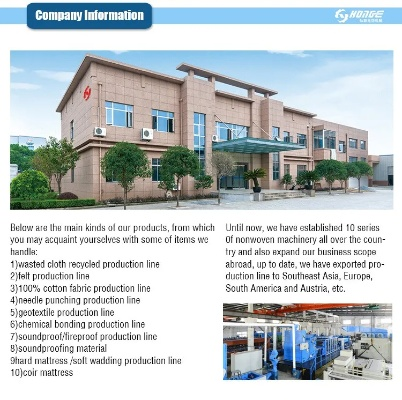The Role of Textile Testing in Quality Control
In the realm of quality control, textile testing plays a pivotal role. This process involves assessing the material's properties and functionality to ensure it meets industry standards and consumer expectations. Textile testing encompasses a range of techniques, including mechanical testing, chemical analysis, and environmental assessments. These tests provide insights into the durability, strength, and safety of textile products, enabling manufacturers to optimize their designs and production processes. As technology advances, textile testing methods continue to evolve, incorporating new tools and techniques to better predict product performance and meet changing market demands. In conclusion, textile testing is an essential component of quality control in the textile industry, ensuring that products meet stringent standards and meet the needs of consumers worldwide.
Introduction: Textiles are an integral part of our daily lives, from clothing to home furnishings. They serve as a medium for transmitting information, enhancing comfort, and maintaining hygiene. However, the quality of textiles can vary significantly depending on their composition, production process, and intended use. To ensure that textiles meet the standards set by consumers, manufacturers, and regulatory bodies, testing is essential. This article will discuss the importance of textile testing, its various methods, and some practical examples to illustrate its relevance.
I. Importance of Textile Testing

Textile testing plays a crucial role in ensuring the quality and safety of textile products. It helps manufacturers identify any defects or impurities in their products before they reach the market. By conducting tests, manufacturers can detect issues such as colorfastness, shrinkage, and durability, which can affect the product's appearance, functionality, and longevity. Additionally, testing ensures that textiles meet regulatory requirements, protecting consumers from hazardous materials and chemicals.
II. Methods of Textile Testing
There are several methods used for textile testing, including:
-
Dyeability Tests: These tests evaluate the ability of dyes to penetrate into the fabric and adhere properly. They are important for determining whether the fabric will fade over time or retain its color.
-
Shrinkage Tests: These tests measure the extent to which the fabric contracts during washing and drying. High shrinkage can lead to loosening of stitches and damage to garments.
-
Stability Tests: These tests assess the stability of fabrics against chemical reactions, such as oxidation or hydrolysis. They help determine how well the fabric resists degradation over time.
-
Tenacity Tests: These tests measure the strength and resilience of fabrics. They are particularly important for high-performance textiles like sportswear and outdoor gear.
-
Compression Tests: These tests simulate the weight of clothing items and measure how much they compress the fabric. They are useful for evaluating fabrics that need to withstand heavy wear and tear.
-
Burn Tests: These tests simulate fire exposure and measure the fabric's resistance to flames. They are critical for assessing the safety of fabrics used in firefighting equipment and other high-risk applications.
III. Practical Examples
To better understand the practical implications of textile testing, let's consider a real-world example: the development of a new line of children's clothing. The manufacturer wants to ensure that the fabric used in the clothing meets all safety and performance standards. They would likely conduct dyeability tests to ensure that the colors do not fade easily, shrinkage tests to prevent loosening of stitches, and stability tests to prevent chemical reactions that could damage the fabric. Additionally, they might perform compression tests to ensure that the fabric can withstand heavy wear and burn tests to ensure that it is safe for young children.
IV. Conclusion
Textile testing is essential for ensuring the quality and safety of textile products. By conducting various tests, manufacturers can identify potential issues early on and address them before they impact the consumer experience. Additionally, testing helps protect consumers from hazardous materials and chemicals, ensuring that they receive products that meet their needs and expectations. As technology continues to advance, the methods used for textile testing will evolve to meet the demands of modern manufacturing and consumer preferences.
纺织品检测是确保产品质量和安全的重要环节,主要涵盖以下几个方面的内容:
纤维成分检测
纤维成分是纺织品的基础,其质量直接影响到纺织品的性能和用途,检测内容包括纤维的种类、含量、长度、直径等,以确保纺织品符合国家标准和客户需求。

物理性能检测
物理性能是指纺织品在特定环境下的性能表现,如强度、耐磨性、抗皱性、吸湿性等,检测方法包括拉伸强度测试、耐磨性测试、抗皱性测试等,以确保纺织品在各种使用场景下都能达到预期的性能指标。
化学成分检测
纺织品在使用过程中可能会接触到各种化学物质,因此对其化学成分进行检测也是必不可少的,检测内容包括纺织品中的有害物质含量,如重金属、染料等,以确保纺织品符合环保标准。
安全性检测
纺织品在使用过程中可能涉及人体接触,因此对其安全性进行检测也是非常重要的,检测内容包括纺织品对人体的无害性、刺激性等,以确保纺织品在使用过程中不会对人体造成伤害。
案例说明
以下是一个纺织品检测的案例说明:
某品牌纺织品检测过程
该品牌在生产过程中对每一批次的纺织品都进行了严格的检测,他们对纤维成分进行了检测,确保纤维的质量符合国家标准,他们进行了物理性能和化学成分的检测,以确保纺织品在各种使用场景下都能达到预期的性能指标,他们还进行了安全性检测,确保纺织品在使用过程中不会对人体造成伤害。
纺织品检测的重要性体现
在现代社会中,纺织品已经成为人们日常生活中不可或缺的一部分,通过纺织品检测,可以确保纺织品的品质和安全,提高消费者的信任度和满意度,纺织品检测也是企业生产的重要环节,可以提高企业的竞争力。
英文表格补充说明
以下是英文表格补充说明:
| 项目 | 描述 | 检测方法 | 结果要求 |
|---|---|---|---|
| 纤维成分 | 种类、含量、长度、直径等 | 显微镜观察、化学分析等 | 符合国家标准和客户需求 |
| 物理性能 | 强度、耐磨性、抗皱性、吸湿性等 | 拉伸强度测试、耐磨性测试等 | 达到预期的性能指标 |
| 化学成分 | 有害物质含量 | 化学分析等 | 不超过国家环保标准 |
| 安全性 | 对人体的无害性、刺激性等 | 安全测试等 | 无有害物质残留,符合安全标准 |
| 检测记录与报告 | 详细记录检测过程与结果 | 提供详细的检测记录与报告 | 符合相关标准和法规要求 |
纺织品检测是确保纺织品品质和安全的重要环节,需要严格按照国家标准和客户需求进行检测,企业也应该加强纺织品检测的力度,提高纺织品的品质和安全水平,提高消费者的信任度和满意度。
Articles related to the knowledge points of this article:
Boosting Your Wardrobe with Bonizys Wide Range of Textiles
Exploring the Rich Traditions of Rui Tao Textiles in Shaoxing
Broadening Horizons:Exploring the Global Reach of Wus Textiles
The Ultimate Guide to Choosing the Best Fabrics for Your Next Project
An Extensive Guide to Printed Textiles:Types,Uses,and Case Studies
Narishima Textiles:Crafting the Perfect Blend of Quality and Style


